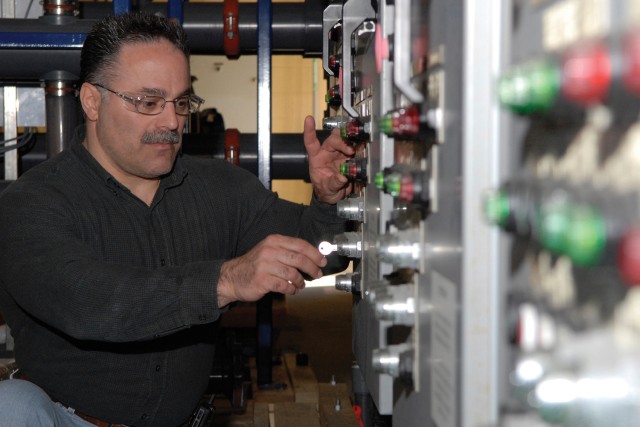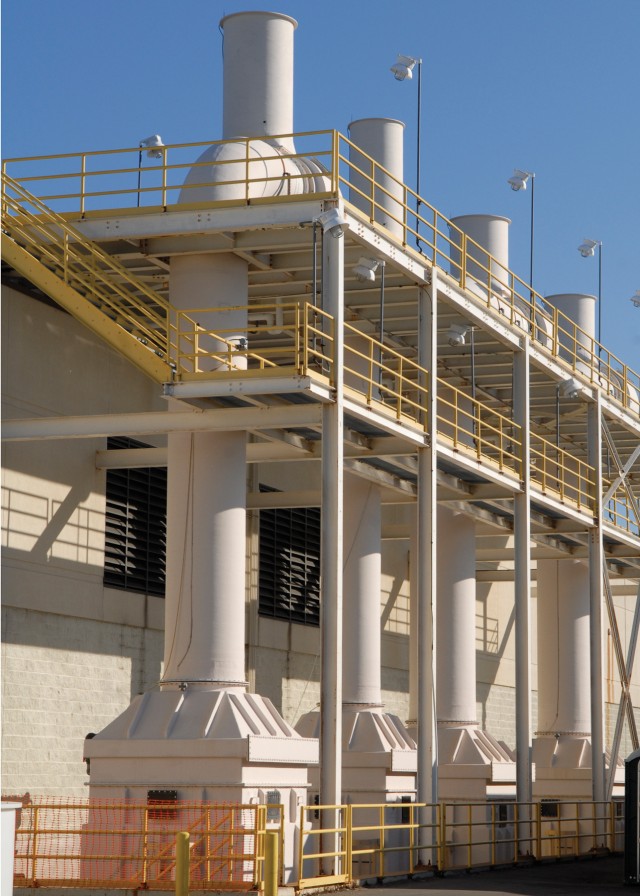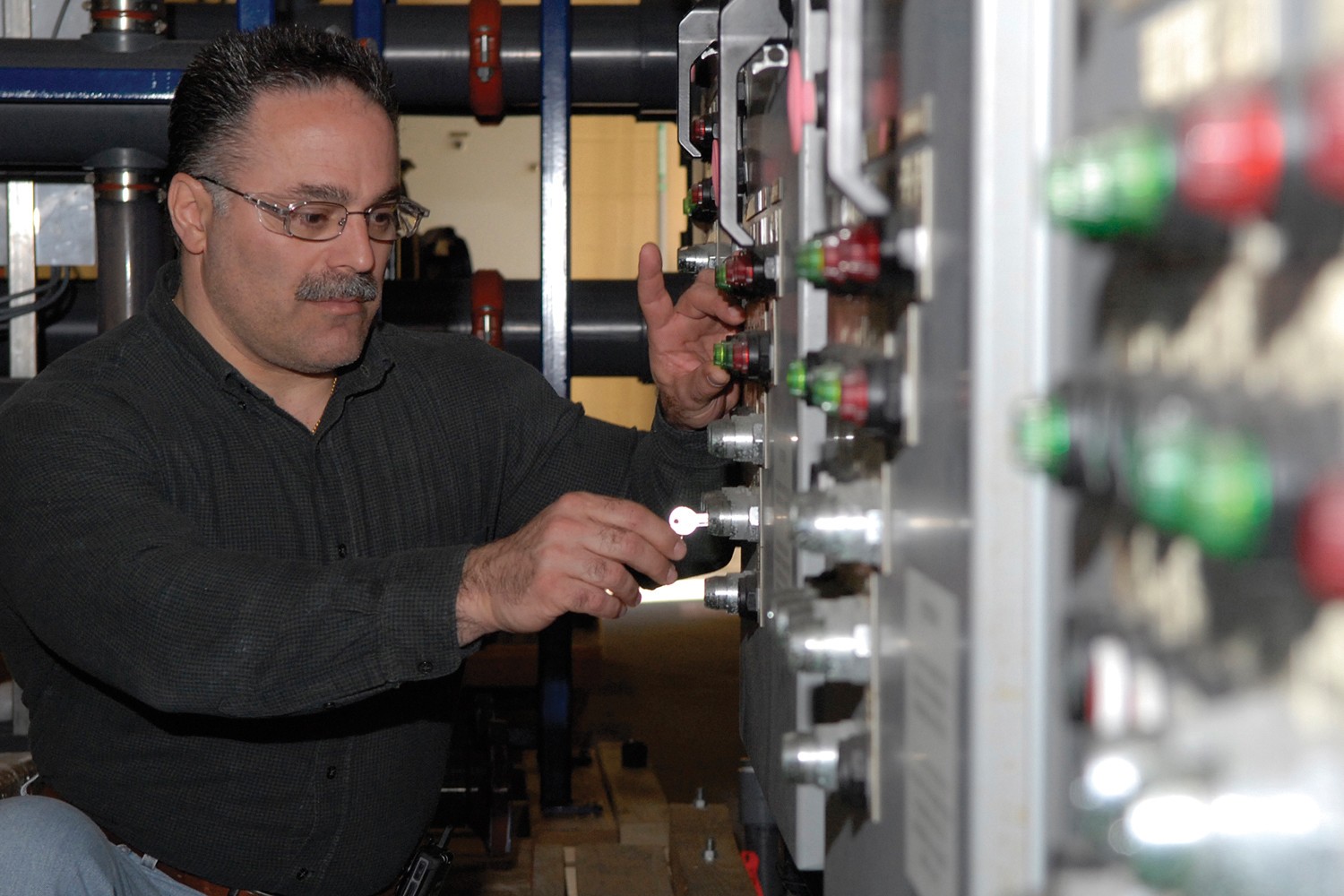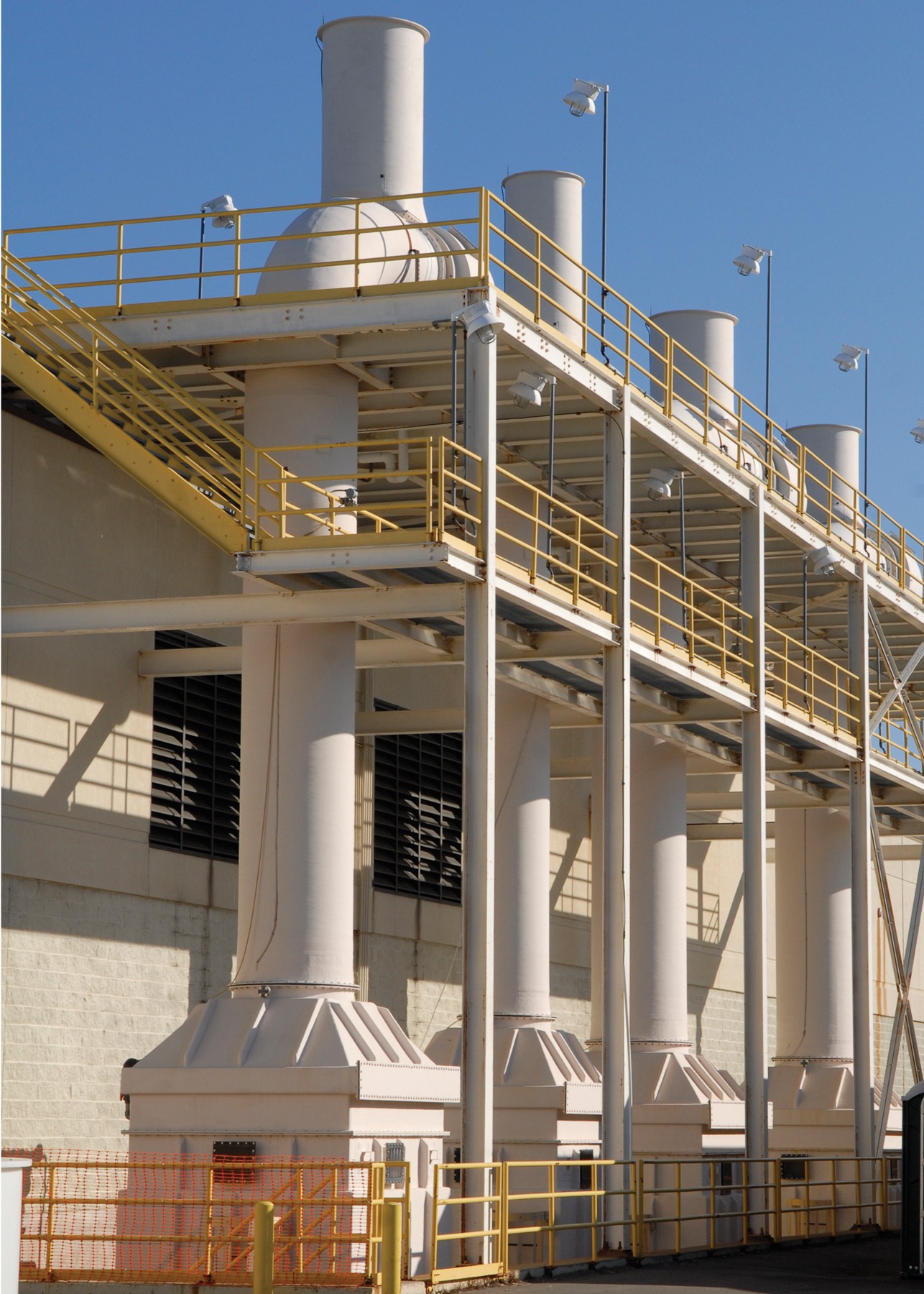TOBYHANNA ARMY DEPOT, PA. - A Lean event has increased the safety and efficiency of the Industrial Operation Facility's air scrubber system, and will save more than $1 million over the first eight years following implementation.
Depot technicians plate metal to reduce or prevent corrosion. Air scrubbers remove air contaminants generated from the plating process by spraying water into four stacks as the air rises through them.
"The air contaminants bond with the water, which falls to the bottom of the stack and is sent to the treatment facility," said Chas Valenza, a chemist in the Productivity Improvement and Innovation Directorate's Industrial Modernization Division.
Air is drawn up the stacks by four-foot diameter fans at a rate of 150,000 cubic feet per minute, preventing contaminated air from spreading throughout the IOF.
"The fans were originally designed to run 24 hours a day, seven days a week, even though the plating shop is typically active for only one shift," Valenza said. "This used lots of energy when it wasn't necessary, wasting gas and electricity."
The obvious solution, to shut down three of the four scrubbers during downtime, presented a major problem.
"During winter, the idle fans are subject to ice buildup from rain, freezing rain, and snow that melts and refreezes," Valenza said. "Also, as the air rose through the stacks in winter, it cools and condenses, and the moisture falls and settles on the inactive fans and freezes."
The fans, now out of balance, could be damaged or even destroyed if they were turned on.
"The only way to prevent the buildup was to run the fans day and night, which would drive up costs. This prompted a Lean Six Sigma project in mid-2009," Valenza said.
Data ranging from when the fans were on and off to the amount of air leaving the fans every minute was collected and analyzed by Valenza.
"I measured fan output every hour, calculated the amount of heat energy to raise the temperature of the outside air to the temperature inside the shop, calculated heat and electrical energy needed to fun the fans every hour, we brainstormed the whole scrubber operation," he said. "The goals were reducing process lead time, safety and environmental risks, energy costs and increasing process cycle efficiency."
The solution was to automate the entire system which was completed in December 2009. Using Valenza's data, Industrial Modernization Division personnel installed the automation equipment, including variable frequency drives to control how fast the fans spin. Now, instead of the fans being fully on or fully off, they could be set to spin at whatever rate was needed.
"In the summer, the fans could be run at 100 percent power or turned off as usual," Valenza said. "In winter, they are set to winter mode, spinning only 10 percent of their full power when they are not needed. The air output is zero, but the blades are spinning just fast enough to throw off water and snow, preventing ice buildup and saving about 70 percent of heat energy."
Automation also reduced safety risks by 98 percent, environmental risks were reduced 100 percent and process cycle efficiency increased to 90.7 percent. Automation reduced an air scrubber operator's time to manage the system by 88 percent. "Instead of having to walk around three floors to run the system to having to push one button," Valenza said. "That of course reduced the safety risk. The automation also reduced energy costs from $312,938 to $176,852 the first year. Labor cost savings was $14,011 the first year."
Tobyhanna Army Depot is the Defense Department's largest center for the repair, overhaul and fabrication of a wide variety of electronics systems and components, from tactical field radios to the ground terminals for the defense satellite communications network. Tobyhanna's missions support all branches of the Armed Forces.
About 5,600 personnel are employed at Tobyhanna, which is located in the Pocono Mountains of northeastern Pennsylvania.
Tobyhanna Army Depot is part of the U.S. Army CECOM Life Cycle Management Command. Headquartered at Fort Monmouth, N.J., the command's mission is to research, develop, acquire, field and sustain communications, command, control computer, intelligence, electronic warfare and sensors capabilities for the Armed Forces.




Social Sharing